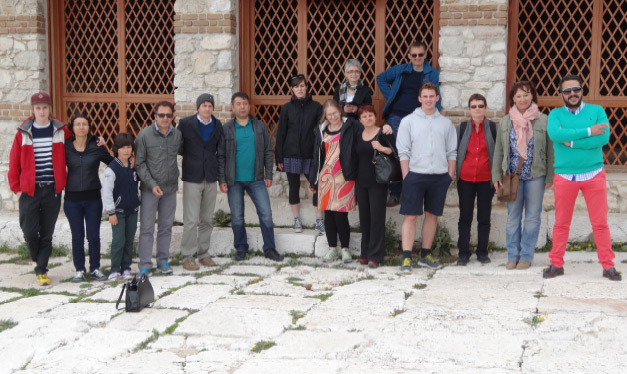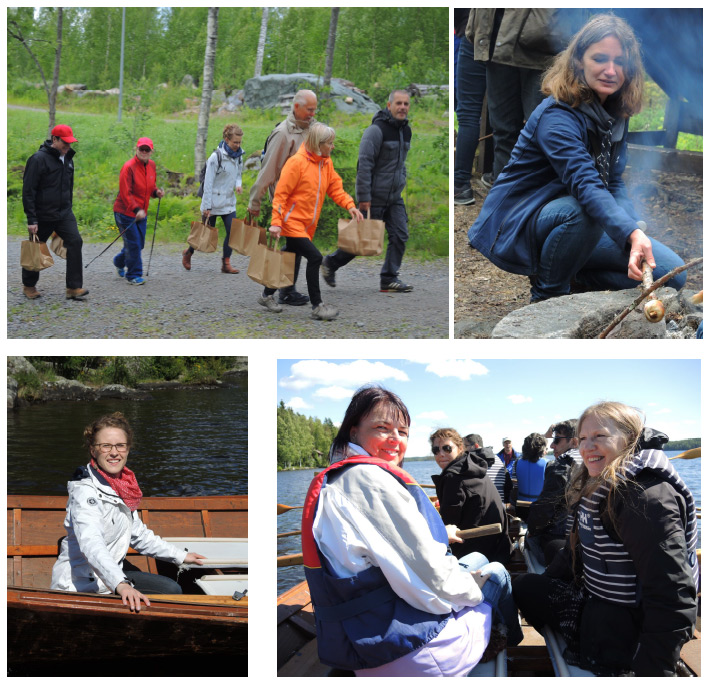"Happiness is like a butterfly: the more you chase it, the more it will elude you, but if you turn your attention to other things, it will come and sit softly on your shoulder."
Henry David Thoreau

The main aim of this project was to strengthen the daily life of people in difficult life situations and to develop a non-formal course to help these people to foster confidence in their abilities. Due to the socioeconomic crisis many European citizens have to face economic hardship and thus have to cope with unwelcome changes in their lives such as unemployment, job insecurity or the lack of sufficient wages. These problems are strongly linked to health problems, anxiety disorders and depression. The Learning-to-be-happy project established a network among the main actors in the educationallearning domain involved in supporting people living in vulnerable social contexts. The consortium was composed of 9 partners across Europe.
This course provides a number of creative and comprehensive approaches to help disadvantaged people help themselves and thus improve their daily life conditions. The course and all materials are integrated into an open source platform, free and accessible to everyone.
All the partners promote the content through different social media and word-of-mouth in order to assure a wide spread of the results outside the consortium:
Volkshochschule Lingen, Coordinator (Germany)
Archivio della Memoria (Italy)
European Learning Centre (Spain)
Sastamalan Opisto (Finland)
Frauenberufszentrum Women's Job Centre (Austria)
La Coupole (Belgium)
Föreningen Aktiva Södertälje (Sweden)
HF & VUC FYN Glamsbjerg (Denmark)
Burdur _l Sa_lık Müdürlü_ü, Sa_lık Akademisi (Turkey)

All partners actively participated in the common activities, i.e. the development of the questionnaires and conducting the respective interviews with the adult learners, the creation of the different modules and learning and teaching sections, the video conference meetings, and the countries’ poster sessions. At the first partner meeting, the coordination of the project was delegated to each of
the contact persons responsible for the project organization and management in
each country.
The following list features the main activities in which all the partners collaborated:
• Qualitative and quantitative research: all the participating institutions developed a qualitative and quantitative research in the respective countries to make a first selection of the main topics and to create the respective contents.
• Development and production of the contents: all the participating institutions developed the contents of the course by creating one or more modules and the elaboration and review of the modules created by the other partner organizations. The contents will be verified by an active and regular communication through email and Skype and during the meetings in the different countries.
• Best practices: all the participating institutions shared and evaluated the common best practices content for suitability to their context.
• Website and social networks: the coordinating organization realized the website where to host the course content. Each participating institution uploaded the content in the respective language and disseminated the project via the social networking sites Facebook and Google+; a YouTube channel was set up.
• Course activities: all the participating institutions used the social networks, helped creating the e-newsletters, spread them appropriately and, in their learning context, distribute the contents of the course in a very dynamic and active way.
• Evaluation process: all partners took actively part in contributing to any evaluation process throughout the lifetime of the project
• E-newsletters: were provided by the corresponding hosting organization with the cooperation of all the partners within one month after the meeting took place.
All the outcomes can be found on the project’s website subdivided to various sections: www.learningtobehappy.eu

7 possible ways to becoming a happier person
The modules of the project were set up and divided by all the partners
• Understanding dreams & symbols
• Eating habits
• Emotions
• Playing, having fun
• Sleep disorders
• Social interaction
• Physical exercise/Sports
All the partners responsible for their modules did not only research, they also set up relevant courses at their institutes.
On the website the outcomes are divided into Items / Links (best practice) / Videos
Everybody is able to use these outcomes and to adapt her/his own free course related to the topic of “Learning to be happy”.

ITEMS (exceptional)
Understanding dreams & symbols
☺ Definition of symbols
☺ Spiritual growth through different ways (art, meditation, visualization, etc)
☺ Feng Shui, Remembering dreams, understandings children’s dreams…
Eating habits
☺ 5 Healthy Eating Habits to Steal From Europeans
☺ Reliability of a dietary questionnaire on food habits, eating behaviour and nutritional knowledge of adolescents.
☺ A systematic review of socioeconomic differences in food habits in Europe: consumption of cheese and milk
Emotions
☺ Why is it taboo to talk about happiness
☺ How Do We Make Happiness Grow?
☺ 21 good recommendations to make yourself happy
Playing, having fun
☺ We asked the learners what they like about playing.
☺ Oiva, the app for feeling good
☺ iPad courses for immigrants
Sleep disorders
☺ Sleep Disorders and Sleeping Problems
☺ Mindfulness Mediation
☺ What you eat may help you get a good night's sleep Social interaction
☺ 10 Tips for Improving Social Interaction
☺ How to Be More Social
☺ Top 10 Conversation Topics Physical
Physical exercise/Sports
☺ SMART Goals
☺ Walking and waking up to spring in nature
☺ The Swedish way of organizing sports and focus on having fun instead of competing
